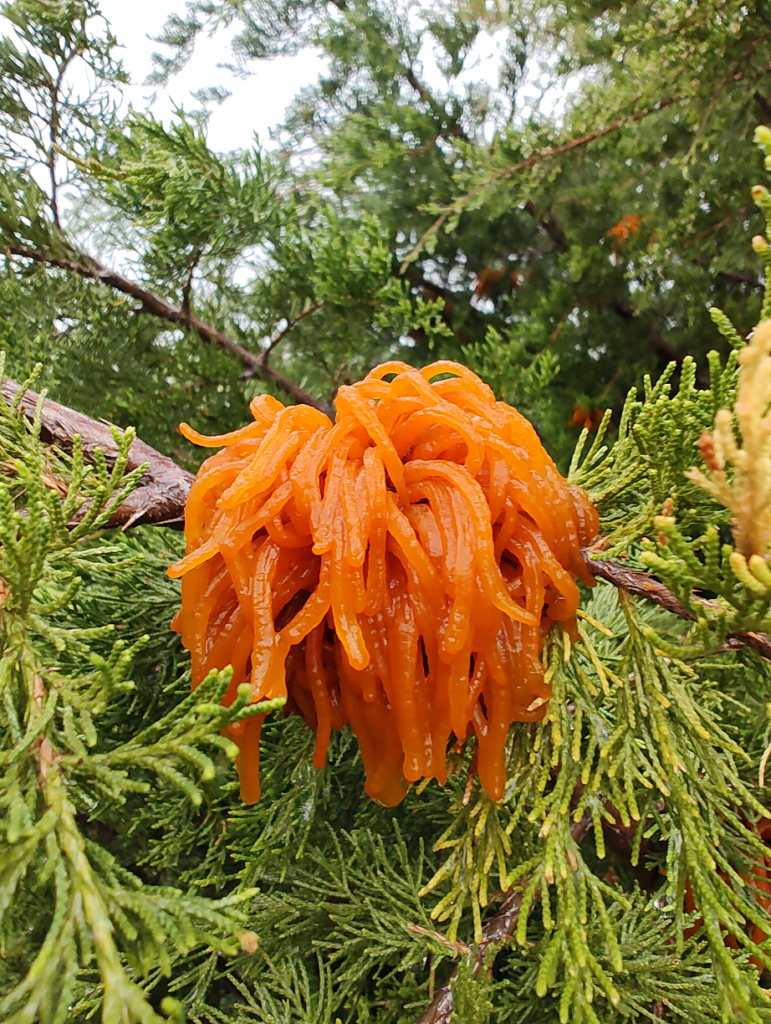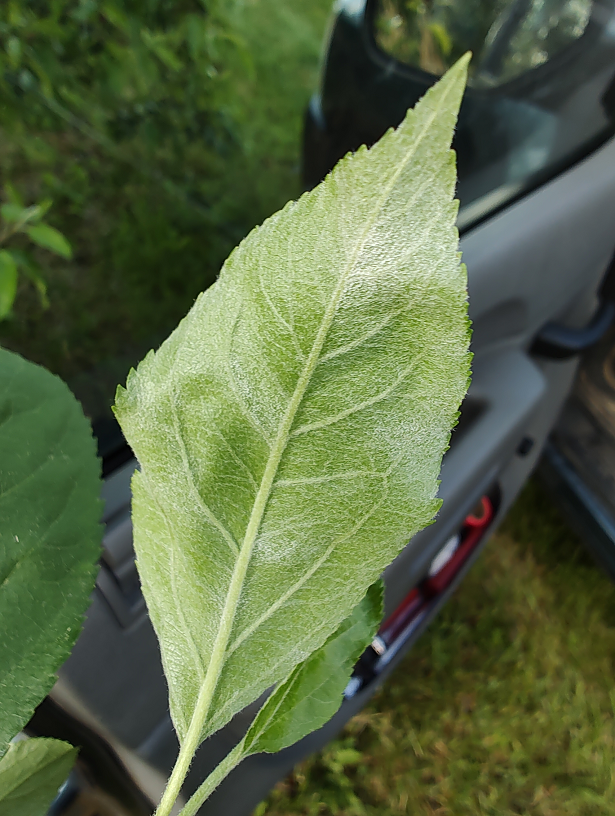1. If Young or Cider Trees in Bloom, 8 May Fire Blight Infection Needed Streptomycin; 2. Primary Scab Season Over in South VA but Juniper Rusts Continue to Infect Apples; 3. Powdery Mildew is a Risk
1. If any young trees planted late are in bloom, or any cider cultivars are maybe in bloom in Northern VA, fire blight infection reported by NEWA EIP model on 8 May should have been controlled by streptomycin application in mix with Regulaid or Li700 up to 24 h after the rain started on 7th May (most farms are done with bloom, so risk is low unless you have a blooming young or cider orchard). If not protected by streptomycin, and fire blight had caused infection based on the EIP model in NEWA, keep in mind that Apogee or Kudos is a great option for shoot blight control. Until the terminal bud set is completed on shoots, shoots are susceptible to fire blight infections from infected flowers. If you missed an application of streptomycin, you can apply Apogee rescue treatment (12 oz/100 gal) that have ability to prevent canker formation from infected shoots : Effective Post-Infection Programs of Prohexadione-calcium for Reducing Shoot Blight and Preventing Fire Blight Canker Initiation on Apple Wood with Cost-Benefit Analysis. Cankers developing on central leader and rootstock can kill trees. In addition to this PGR, you can use Cueva at 2 qts/A in mix withe Double Nickel 1 qt/A to reduce chances for new shoot blight infections. Apogee is used at 6-12 oz/100 gal or 3-6 oz for trees <5 years. Usually, Apogee is applied preventively, first time at 1-3” shoot growth stage (king-bloom to late bloom) and the second time 14-21 days later.
2. Juniper rusts have also had an extremely high infection events from 28 April onward and DMI fungicides plus mancozeb applied for scab should have covered for these infections. DMI-s can provide a kick-back activity of 96 h to stop infections on apple that were not covered for before the rain. High rust pressure is predicted to continue as almost all cedar galls have emerged at an unprecedented way in the last 10 days (Figure 1), and the protection by fungicides will have to continue by applying a DMI plus mancozeb every 14 days.
3. The primary scab season was over in Rustburg on 1st May and 4th May in Tyro, as the ascospore reserves have been depleted in the leaf litter on the orchard floor below 5%. However, primary scab season is not over in Northern Virginia. We will report on this date when ascospore reserves have been below 5%. The 7 and 9 May rain events have or will trigger likely the last primary scab infections and if you did not cover with a fungicide ahead of it, you can apply DMI fungicides with mancozeb today as DMIs can reach back 96 h and control these scab infections. Regardless of the scab season end, the fungicide coverage needs to be continued on all locations up to 2 weeks after the date of primary scab season end. This is absolutely needed because you do not know how good your coverage was in the major spring scab infection events and rust infections warrant continued applications ahead. Many of you are using alternate row middle (ARM) spraying that should cease at bloom and you should spray every row from then on. So, if any scab lesions arise now from coverage issues associated with ARM, or due to missed fungicide applications before any rains during early spring, it will be much harder to have perfect looking fruit crop until harvest. Risks from scab are now high in orchards where scab lesions are visible on leaves or, hopefully not on fruit. In those orchards protection from scab scab continues with higher rates of captan as the secondary infections by asexual spores called conidia, which is what is inside of the scab lesions you see, and are now able to infect. If you see scab lesions let me know. Leaves are still expanding now on terminal shoots and can hold much more fungicide residues to protect from diseases, allowing some redistribution during low-amount rains.
4. First secondary infection symptoms of powdery mildew were observed today at AREC (Fig. 2) in Winchester on Gala. You can use Rally, Sonoma, Indar, Cevya, Aprovia, Fontelis, Sercadis, Miravis or Excalia plus mancozeb (3 lb/A) and you will control both scab, rust and powdery mildew with these fungicides


